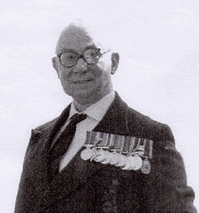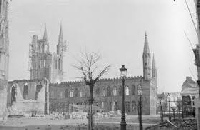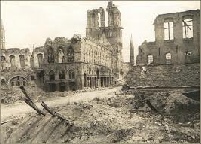



The Parish Church of St George the Martyr, Waterlooville

To mark the 100th anniversary of the outbreak of World War I, we are continuing the serialisation of the diaries of Bugler John McCormack of “A” Company, 9th Battalion, County of London, Queen Victoria’s Rifle. John McCormack is Eileen Oades Uncle and Rosemary Monk’s Great Uncle.
FEBRUARY 5TH 1915.
The French guns, -
FEBRUARY 7TH 1915.
Sunday, and we marched back to billets at Dranoutre. After a good sleep and wash etc. we were alright and were looking forward to another good night's rest but, alas, the transport had set their barn on fire and we had to turn out to put it out proper country fashion. I had to assist in burying the dead animals next day, after which we moved to billets at Ballieui. I might mention that our transport broke down on the narrow road so we had no grub for a day. I laid down to sleep. I might mention that we had been pestered with lice for a long time, owing to the fact of long exposure in the trenches without a bath or even a decent wash, and before packing down to sleep I had a good search and found 70 lice of all sizes which I reckon is about a weekly issue! I will now mention a little of Ballieui. Like other places it has its bandstand and numerous estaminets where you can get French beer or wine, biscuits 4 @ 1d, candles 2½ d each. The girls are extremely pretty but as they grow up get quite the reverse, a feature one notices in the various grades of females. Our rest being up we were all ready for the trenches when we were stopped. The 13th Brigade were going to Ypres without us and so our good friends were off and we were attached to the 84th Brigade with whom we did our share of trench work without much excitement. Now just a word about our 12 days in trenches. We had some Monmouthshire Terriers mingled with us for instruction. About this time the R.E. were busy making a new trench in front of ours and nearer the German lines. They lost a lot of men as did also the Northumberland Fusiliers. The road by us was packed with wounded from both regiments as well as our own. One fellow came down hit in the stomach. The groaning was awful. But, let me say, the Germans were not having it all their own way. Our guns, of which we had plenty in this spot, (Kimmal & Messines), were playing hell with them day and night and the infantry in the trench were holding their own with the blighters.
MARCH 7TH 1915.
Wolverghem set on fire by enemies shells. Ammunition stores in danger.
Summer Edition 2014
Diaries of a First World War Bugler

MARCH 8TH Monday.
Souvenirs Farm is, I might say, about 5 minutes walk from the village of which I have previously spoken and has been hit by shells twice, the roof is buckled, the place is well fortified, it is used mostly as a store for all surplus articles, it is responsible for about 200,000 rounds of ammunition and countless numbers of hand-
MARCH 14TH 1915 Sunday, at 5 o'clock.
It was a cruel march to the firing line, an entire new spot, through magnificent country in Belgium and we took up our position in a small wrecked village called St Ives with the 84th Brigade and after all the trouble to get there we were ordered back again owing to a mistake, and wasn't the air blue with bad language!
We turned about and arrived at a large town well behind the firing line, dog-
MARCH 21ST 1915 Sunday.
A glorious day made me think of dear old “Blighty”. We had the usual church parade in the morning and the rest of the day to ourselves and turned in for a good night's sleep. We were up at 5.30am. next morning and drew 24 hours rations, paraded at 11.30am. and started off for Ypres, the place I dreaded going to. It was an awful march right through Locre, and other minute villages of Belgium. We stopped on the way for dinner and off again. The whole march took 6 hours during which time we could hear the big guns booming out their death knell, soon we spotted the ruined cathedral of Ypres after which we were soon in the once splendid town, a mass of wreckage, everywhere, the beautiful cathedral was wickedly treated and the marvellous sculptured Cloth Hall is a mass of tumbled-


To be continued